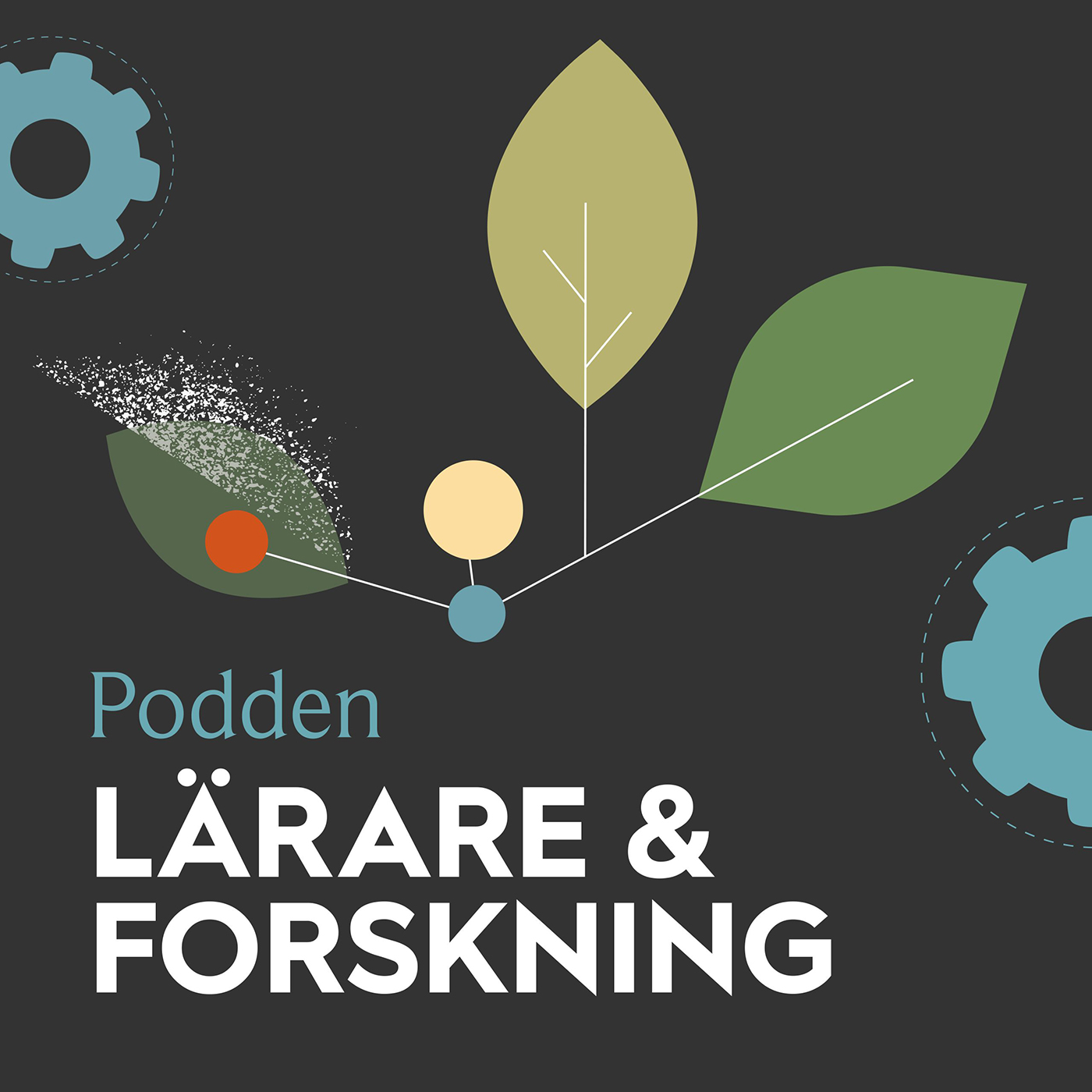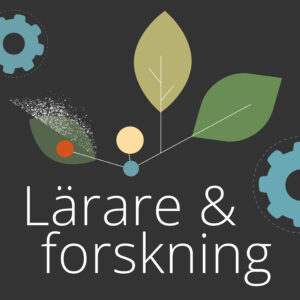Kartläggning av förskoleklassens matematikundervisning om tal – kvalitativa skillnader och lärandemöjligheter
DOI:
https://doi.org/10.61998/forskul.v12i1.22918Nyckelord:
förskoleklass, matematik, undervisning, kvalitet, lärandemöjligheter, tal, tals del-helhetsrelationerAbstract
Under hösten 2021 gjordes en kartläggning av matematikundervisningen i 95 förskoleklasser i syfte att bidra med kunskap om vad kvalitet i undervisning kan innebära och vad elever ges möjligheter att lära om tal, tals egenskaper och dess användning. Analysverktyget "Mediating Primary Mathematics" användes för att identifiera skillnader i undervisningens kvalitet, det vill säga hur ett matematiskt innehåll behandlades och medierades i undervisningen. Resultatet visar på en variation i hur innehållet medieras och därmed vad elever ges möjligheter att lära. Goda undervisningsexempel har observerats, samtidigt som utvecklingsområden identifierats. Artefakter förekommer ofta, men används inte alltid på sätt som synliggör matematiska samband och innebörder. Lösningsmetoder får sällan stå i centrum för undersökning, jämförelse och värdering i undervisningen. Elevinspel bekräftas ofta, samtidigt som det blir tydligt att undervisningen sällan erbjuder utveckling och bearbetning av dessa.
Mapping of Preschool Class Mathematics Teaching about Numbers - Qualitative Differences and Learning Opportunities
During the autumn of 2021, an observational study was conducted in 95 Swedish preschool classes with the aim of mapping and describing the quality of teaching. The framework "Mediating Primary Mathematics" was utilized to identify and assess variations in the quality of teaching about numbers, their properties, and usage, that is, how the mathematical content was treated and mediated in the teaching situation. The result revealed variations in how the mathematical content was mediated, which impacted the learning opportunities provided to students. While several examples of high-quality mathematics teaching were observed, areas for improvement were also identified. Artifacts were frequently used in teaching, although their usage did not consistently emphasize mathematical relationships and meanings. Furthermore, teaching rarely emphasized comparison and evaluation of different solution methods. Student contributions were often acknowledged, but it became evident that their input was rarely elaborated upon.
Referenser
Ackesjö, H. (2010). Förskoleklasslärare som gästarbetare. Gränsmarkeringar via sociala stängningar. Nordisk barnehageforskning, 3(1), 1–16. https://doi.org/10.7577/nbf.253
Ackesjö, H. (2014). Barns övergångar till och från förskoleklass. Gränser, identiteter och (dis-)kontinuiteter. [Doktorsavhandling, Linnéuniversitetet]. http://www.diva-portal.org/smash/get/diva2:738484/FULLTEXT01.pdf
Ackesjö, H. & Persson, S. (2010). Skolförberedelse i förskoleklass: Att vara lärare-i-relation i gränslandet. Pedagogisk forskning i Sverige, 15(2/3), 142–163.
Alatalo, T. (2017). Förskollärares och grundskollärares uppfattningar om undervisning och lärande i förskoleklass. Pedagogisk forskning i Sverige, 22(1–2), 79–100.
Alibali, M. W., Young, A. G., Crooks, N. M., Yeo, A., Wolfgram, M. S., Ledesma, I. M., Nathan, M. J., Church, R. B. & Knuth, E. J. (2013). Students learn more when their teacher has learned to gesture effectively. Gesture, 13(2), 210–233. https://doi.org/10.1075/gest.13.2.05ali
Arnell, S. (2021). Elevers möten med matematik: En studie om elevers möten med matematik i förskoleklass och årskurs 1. [Doktorsavhandling, Linköpings universitet]. http://www.diva-portal.org/smash/get/diva2:1581189/FULLTEXT02.pdf
Askew, M. (2019). Mediating primary mathematics: measuring the extent of teaching for connections and generality in the context of whole number arithmetic. ZDM Mathematics Education, 51(1), 213–226. https://doi.org/10.1007/s11858-007-0065-9
Baroody, A. & Purpura, D. (2017). Early number and operations: Whole numbers. I J. Cai (Red.), Compendium for research in mathematics education (s. 308–354). National Council of Teachers of Mathematics.
Björklund, C., Van den Heuvel-Panhuizen, M. & Kullberg, A. (2020). Research on early childhood mathematics teaching and learning. ZDM Mathematics Education, 52(4), 1–13, https://doi.org/10.1007/s11858-020-01177-3
van Bommel, J. & Palmér, H. (2021). Enhancing young children’s understanding of a combinatorial task by using a duo of digital and physical artefacts. Early Years, 41(2–3), 218–231. https://doi.org/10.1080/09575146.2018.1501553
Carpenter, T. P., Moser, J. M. & Romberg, T. A. (Red.). (1982). Addition and subtraction: A cognitive perspective. Lawrence Erlbaum.
Cheng, Z. J. (2012). Teaching young children decomposition strategies to solve addition problems: An experimental study. The Journal of Mathematical Behavior, 31(1), 29–47. https://doi.org/10.1016/j.jmathb.2011.09.002
Clements, D. & Sarama, J. (2021). Learning and teaching early math. The learning trajectories approach (3:e uppl.). Routledge.
Coles, A. (2017). A relational view of mathematical concepts. I E. de Freitas, N. Sinclair & A. Coles (Red.), What is a mathematical concept? (s. 205–222). Cambridge University Press. https://doi.org/10.1017/9781316471128.013
DeJarnette, A., Wilke, E. & Hord, C. (2020). Categorizing mathematics teachers’ questioning: The demands and contributions of teachers’ questions. International Journal of Educational Research, 104, 101690. https://doi.org/10.1016/j.ijer.2020.101690
Ekdahl, A.-L. (2019). Teaching for the learning of additive part-whole relations: The power of variation and connections. [Doktorsavhandling, Jönköping University]. https://www.diva-portal.org/smash/get/diva2:1372663/FULLTEXT01.pdf
Ekdahl, A.-L., Venkat, H. & Runesson, U. (2016). Coding teaching for simultaneity and connections. Examining teachers' part-whole additive relations instruction. Educational Studies in Mathematics, 93(3), 293–313. https://doi.org/10.1007/s10649-016-9700-0
Ellemor-Collins, D. & Wright, R. B. (2009). Structuring numbers 1 to 20: Developing facile addition and subtraction. Mathematics Education Research Journal, 21(2), 50–75. https://doi.org/10.1007/BF03217545
Goldenberg, P. & Mason, J. (2008). Shedding light on and with examples spaces. Educational Studies in Mathematics, 69(2), 183–194. https://doi.org/10.1007/s10649-008-9143-3
Gray, E. M. (1991). An analysis of diverging approaches to simple arithmetic: Preference and its consequences. Educational Studies in Mathematics, 22(6), 551–574. https://doi.org/10.1007/BF00312715
Gray, E., Pitta, D. & Tall, D. (1999). Objects, actions, and images: A perspective on early number development. Journal of Mathematical Behavior, 18(4), 401–413. https://doi.org/10.1007/s11858-018-1010-9
Heinze, A., Star, J. R. & Verschaffel, L. (2009). Flexible and adaptive use of strategies and representations in mathematics education. ZDM Mathematics Education, 41, 535–540. https://doi.org/10.1007/s11858-009-0214-4
Kozulin, A. (2003). Psychological tools and mediated learning. I A. Kozulin, B. Gindis, V. S. Ageyev & S. S. Miller (Red.), Vygotsky´s educational theory in cultural context (s. 15–38). Cambridge University Press.
Kullberg, A., Runesson, U. & Mårtensson, P. (2014). Different possibilities to learn from the same task. PNA, 8(4), 139–150.
Lago, L. (2014). Mellanklass kan man kalla det: Om tid och meningsskapande vid övergången från förskoleklassen till årskurs ett. [Doktorsavhandling, Linköpings universitet]. http://www.diva-portal.org/smash/get/diva2:713228/FULLTEXT01.pdf&sa=U&ei=ANdwU7j8GIf8ywPq0YGYAg&ved=0CCMQFjAB&usg=AFQjCNGl2eAClqY5--kPLCPvH8JhE43R3A
Lannin, J. K. (2005). Generalization and justification: The challenge of introducing algebraic reasoning through patterning activities. Mathematical Thinking and Learning, 7(3), 231–258. https://doi.org/10.1207/s15327833mtl0703_3
Lave, J. (1993). The practice of learning. I S. Chaiklin & J. Lave (Red.), Understanding practice. Perspectives on activity and context (s. 3–32). Cambridge University Press.
Lave, J. & Wenger, E. (1991). Situated learning. Legitimate peripheral participation. Cambridge University Press.
Mason, J. & Pimm, D. (1984). Generic examples: Seeing the general in the particular. Educational Studies in Mathematics, 15(3), 277–289. https://doi.org/10.1007/BF00312078
Murata, A. (2015). Interactions between teaching and learning mathematics in elementary classrooms. I D. Scott & E. Hargreaves (Red.), The SAGE Handbook of learning (s. 233–242). SAGE Publications Ltd.
Rowland, T. (2008). The purpose, design and use of examples in the teaching of elementary mathematics. Educational Studies in Mathematics, 69(2), 149–163. https://doi.org/10.1007/s10649-008-9148-y
Sandberg, G. (2012). På väg in i skolan. Om villkor för olika barns delaktighet och skriftspråkslärande. [Doktorsavhandling, Uppsala universitet]. http://uu.diva-portal.org/smash/get/diva2:561240/FULLTEXT01
Schifter, D. (2011). Examine the behavior of operations noticing early algebra ideas. I M. G. Sherin, V. R. Jacobs & R. A. Philipp (Red.), Mathematics teacher noticing: Seeing through teachers’ eyes (s. 204–202). Routledge.
Schifter, D. & Russell, S. (2022). The centrality of student generated representation in investigating generalizations about the operations. ZDM Mathematics Education, 54(6), 1289–1302. https://doi.org/10.1007/s11858-022-01379-x
Sfard, A. (2008). Thinking as communicating. Cambridge University Press.
Simeonsdotter Svensson, A. (2009). Den pedagogiska samlingen i förskoleklassen. Barns olika sätt att erfara och hantera svårigheter. [Doktorsavhandling, Göteborgs universitet]. https://gupea.ub.gu.se/bitstream/handle/2077/19098/gupea_2077_19098_2.pdf?sequence=2&isAllowed=y
Skolverket. (2022). Läroplan för grundskolan, förskoleklassen och fritidshemmet – Lgr22. https://www.skolverket.se/getFile?file=9718
Sterner, G., Wolff, U. & Helenius, O. (2020). Reasoning about representations: Effects of an early math intervention. Scandinavian Journal of Educational Research, 64(5), 782–800. https://doi.org/10.1080/00313831.2019.1600579
Venkat, H. & Askew, M. (2018). Mediating primary mathematics: Theory, concepts, and a framework for studying practice. Educational Studies in Mathematics, 97, 71–92. https://doi.org/10.1007/s10649-017-9776-1
Venkat, H., Askew, M., Watson, A. & Mason, J. (2019). Architecture of mathematical structure. For the Learning of Mathematics, 39(1), 13–17.
Vennberg, H. (2020). Att räkna med alla elever. Följa och främja matematiklärande i förskoleklass. [Doktorsavhandling, Umeå universitet]. http://www.diva-portal.org/smash/get/diva2:1413144/FULLTEXT01.pdf
Vetenskapsrådet. (2017). God forskningssed. [Elektronisk resurs]
Vygotsky, L. S. (1978). Mind in society. The development of higher psychological processes. Harvard University Press.
Vygotsky, L. S. (1987). The collected works of L. S. Vygotsky, Vol. 1: Problems of general psychology, including the Volume Thinking and speech (R. W. Rieber & A. S. Carton (Red.), översatt av N. Minick). Plenum.
Watson, A. & Mason, J. (2006a). Seeing an exercise as a single mathematical object: Using variation to structure sense-making. Mathematical Thinking and Learning, 8(2), 91–111. https://doi.org/10.1207/s15327833mtl0802_1
Watson, A. & Mason, J. (2006b). Variation and mathematical structure. Mathematics Teaching, 194, 3–5.
Wertsch, J. V. (1998). Mind as action. Oxford University Press.
Westerholm, K. & Samuelsson, J. (2020). Att utveckla god taluppfattning hos alla elever i förskoleklass - en interventionsstudie i matematik. Forskning om undervisning och lärande, 2(8), 46–68.
Wettergren, S., Eriksson I. & Tambour, T. (2021). Yngre elevers uppfattningar av det matematiska i algebraiska uttryck, LUMAT, 9(1), 1–28. https://doi.org/10.31129/LUMAT.9.1.1377
Wästerlid, C. (2020). Conceptual subitizing and preschool class children’s learning of the part-part-whole relations of number. Problems of Education in the 21st Century, 78(6), 1038–1054. https://doi.org/10.33225/pec/20.78.1038
Zazkis, R., Liljedahl, P. & Chernoff, E. J. (2008). The role of examples in forming and refuting generalizations. ZDM Mathematics Education, 40(1), 131–141.
Downloads
Publicerad
Referera så här
Licens
Copyright (c) 2024 Jessica Elofsson, Ulla Runesson Kempe, Anna-Lena Ekdahl, Camilla Björklund

Det här verket är licensierat under en Creative Commons Erkännande 4.0 Internationell-licens.
Författare till innehåll publicerat i Forskul behåller upphovsrätten till sina verk. Artiklar publiceras under villkoren i en Creative Commons-licens CC BY, som tillåter användning, nedladdning, distribution, länkning till och reproduktion i vilket medium som helst, förutsatt att originalverket är korrekt citerat.






